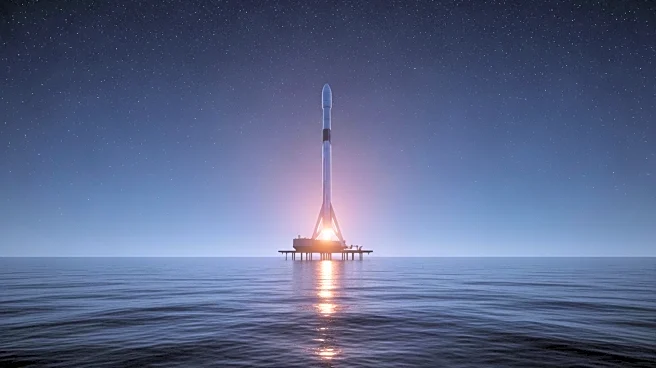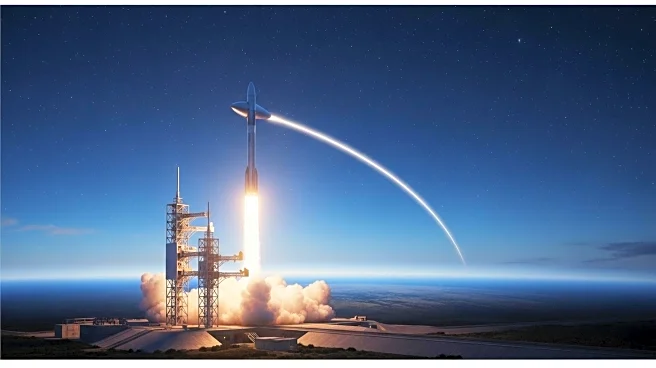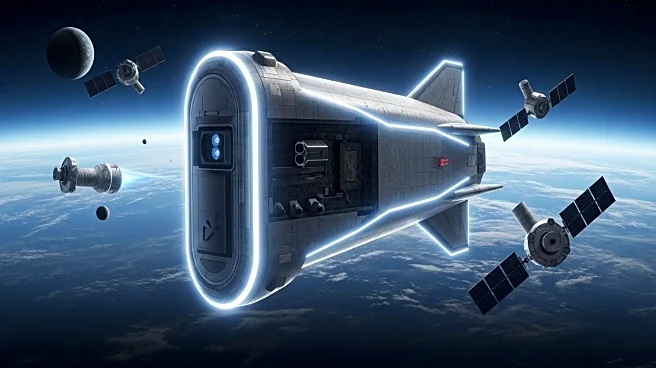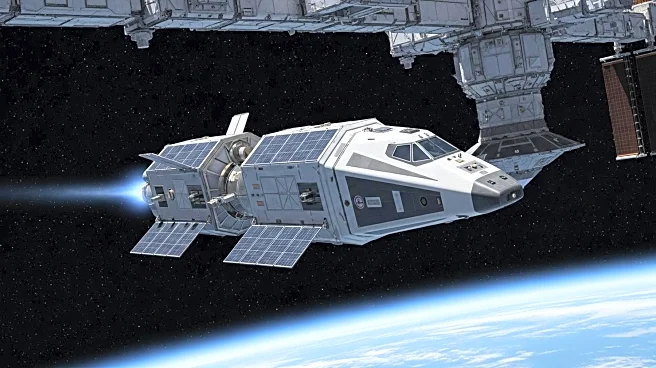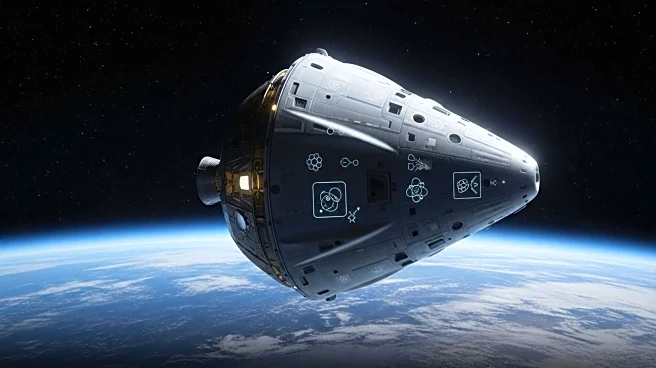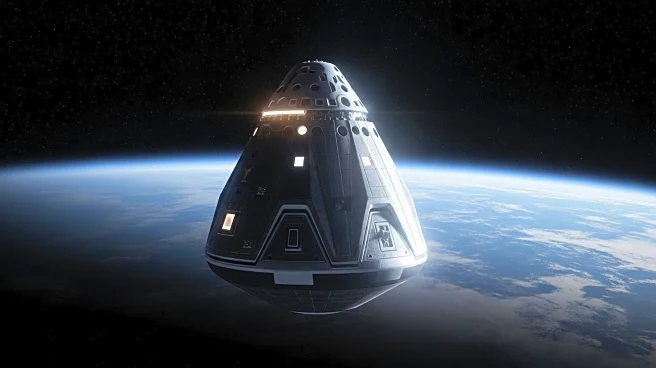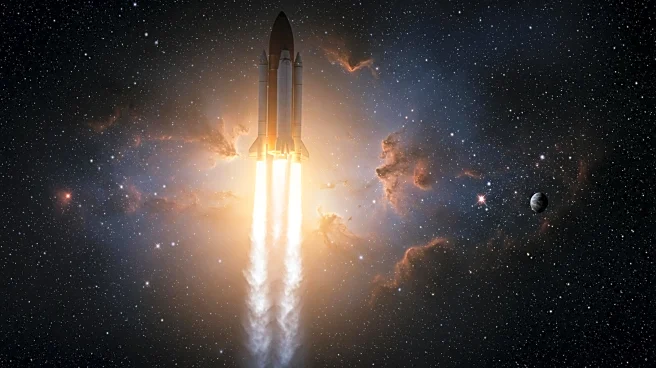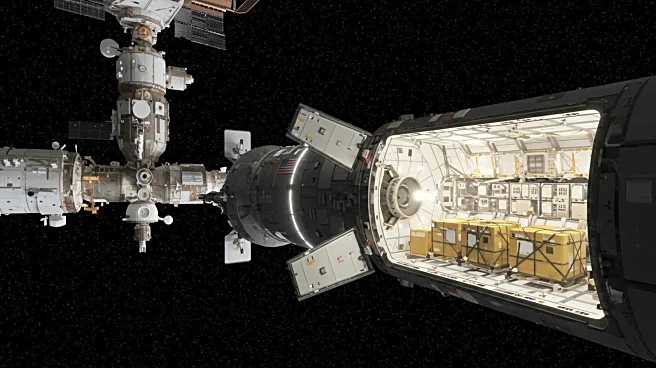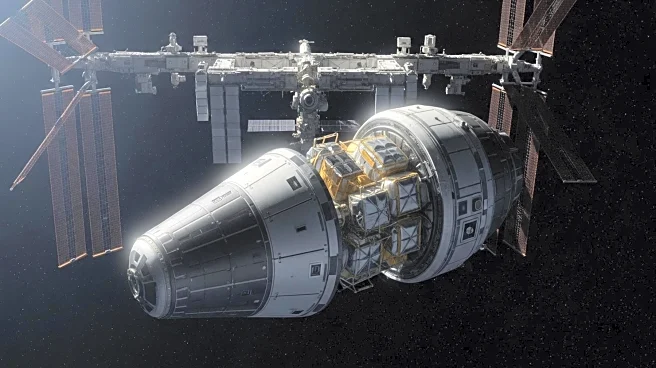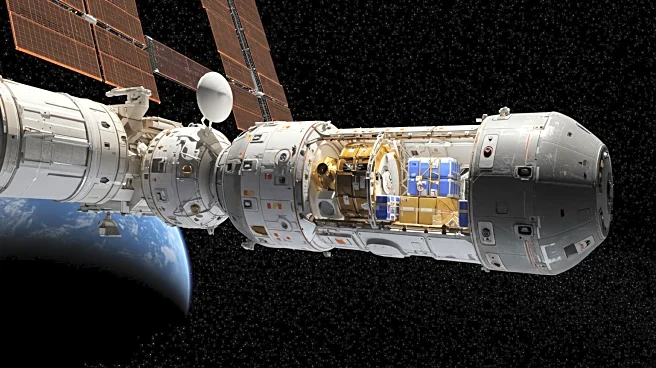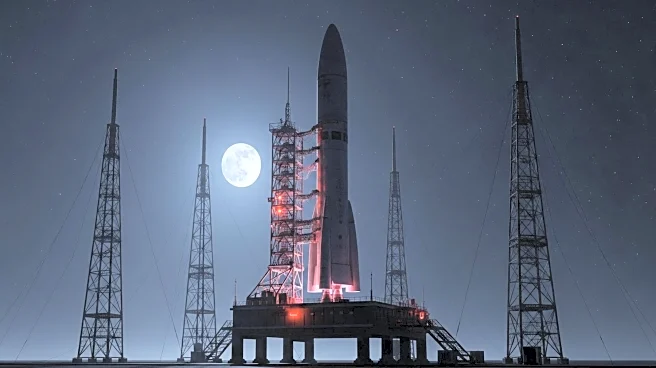What's Happening?
SpaceX launched 28 Starlink satellites into orbit on Wednesday morning, marking a significant milestone in the company's efforts toward rocket reusability. The Falcon 9 rocket lifted off from Cape Canaveral Space Force Station in Florida, deploying the satellites into low-Earth orbit. This mission was the 108th for SpaceX in 2025 and follows the successful test launch of Starship Flight 10. The Falcon 9 booster, B1095, executed a successful stage separation and landed on the Just Read the Instructions droneship in the Atlantic Ocean, marking the 400th successful droneship landing for SpaceX.
Why It's Important?
The successful deployment of Starlink satellites and the 400th droneship landing highlight SpaceX's advancements in rocket reusability, which is crucial for reducing launch costs and increasing mission frequency. The Starlink megaconstellation, now totaling over 8,100 satellites, provides global coverage for high-speed internet access, benefiting consumers, businesses, and governments worldwide. SpaceX's ability to consistently achieve successful landings demonstrates the reliability and efficiency of its launch system, reinforcing its position as a leader in the commercial space industry.
What's Next?
SpaceX plans to continue expanding its Starlink network by launching more powerful satellites aboard Starship once it reaches operational capability. This expansion aims to enhance the network's speed and coverage, providing improved internet services to underserved regions. The company will also focus on further developing the Starship rocket for future missions, including human space travel to the moon and Mars. SpaceX's ongoing efforts in rocket reusability and satellite deployment will play a key role in shaping the future of space exploration and communication.
